PHOTOPHILE- Wayback machines: Craftspeople ply trades at Monticello
Slavery isn't a taboo subject at Monticello. In fact, three times a year, the home of Thomas Jefferson celebrates the contribution Jefferson's workers made to running his estate. This fall's "Plantation Community Weekend" took place on a rainy Sunday, October 8.
Historic interpreters from Williamsburg came to Monticello to recreate the activities of Mulberry Row, where, during the third President's lifetime, enslaved workers made food, baskets, textiles, nails, and other items using traditional techniques.
The 30 interpreters told stories and educated visitors on what life was like for slaves during Jefferson's time, and taught the skills the slaves used to make everything the Monticello residents needed.
Visitors on Sunday learned that slaves worked six days a week, from sunup to sundown, for which they received a pound of fatback, cornmeal, and some fish. The rest of the food they needed they grew on their own during their "free" time.
Nailmaking was a source of income for Monticello. Using "nailrod" shipped over water from Philadelphia, up to 14 boys, ages 10 to 16, would make as many as 10,000 nails in a day.
Not everyone who worked on Mulberry Row was a slave. Jefferson regularly hired artisans to train the slaves.
Plantation Community Weekend is just one of several special events offered at Monticello during the year. See the Upcoming and Ongoing Calendar, page xx, for details of events.
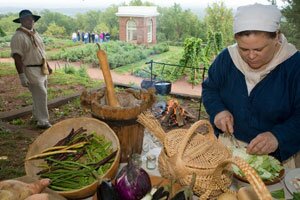
Husband and wife Wayne and Marion Dobbins show visitors how to cook a chicken in a dutch oven.
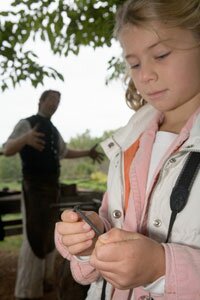
Olivia Cleary, age 9, holds a nail made by the blacksmith.
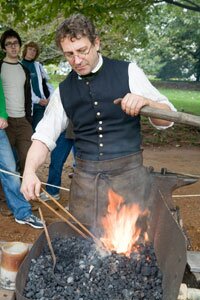
Steve Mankowski heats coals to make nails.
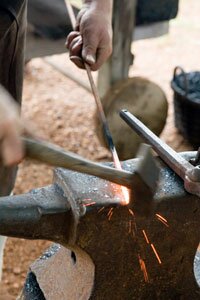
Here's Steve's handiwork.

Storyteller Dylan Pritchett portrays Lewis, a joiner and cabinetmaker.
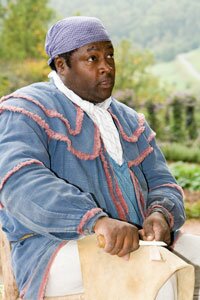
Robert Watson Jr. makes baskets.
#